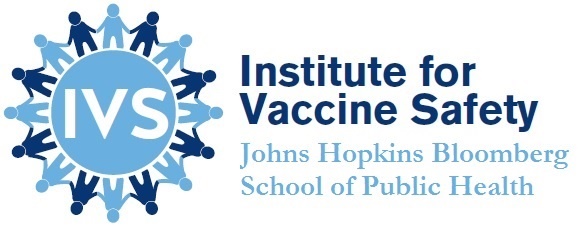Vaccine Preventable Diseases
Rotavirus
ACIP Recs | Disease | Vaccine | References | VIS | WHO modules | Archives
Advisory Committee on Immunization Practices (ACIP) Recommendations
Infants and Children
• All infants without contraindications should receive the rotavirus vaccine series; consisting of either two oral doses of RV1 (trade name: Rotarix®) or three oral doses of RV5 (trade name: RotaTeq®) beginning at about 2 months of age (no earlier than 6 weeks of age).
• Each dose should be separated by at least 4 weeks, and given at the same time as other normal childhood vaccinations.
• Maximum age of the first dose of rotavirus vaccination is 14 weeks and 6 days, and maximum age for any dose is 8 months [4, 5].
For More Information
• ACIP recommendations: https://www.cdc.gov/vaccines/hcp/acip-recs/vacc-specific/rotavirus.html
• Immunization schedules:
http://www.cdc.gov/vaccines/schedules/index.html
Disease
Rotavirus is a very stable double-stranded RNA virus of the Reoviridae family. There are five predominant strains which historically have accounted for 90% of isolates in the United States, 75% of which being the G1 strain. Rotavirus is transmitted through the fecal-oral route and replicates in the epithelium of the small intestine. The incubation period is generally less than 48 hours, after which decreased intestinal absorption of sodium, glucose and water can result in isotonic diarrhea. Clinical manifestations of rotavirus infection are nonspecific and range from asymptomatic to severe with fever, vomiting and dehydrating diarrhea. Potential complications include dehydration, electrolyte imbalance, and metabolic acidosis. Symptoms usually fully resolve within 3-7 days. However, if rotavirus infection is not treated, it can be fatal. Multiple infections are sometimes necessary to confer permanent immunity, although subsequent infections are typically less severe than the first and may even be asymptomatic [1, 2].
Vaccine
Rotavirus vaccines (RV) are live attenuated oral vaccines containing no preservatives. There are two rotavirus vaccines currently licensed in the United States: RV5 (RotaTeq®), which contains five reassortant rotaviruses suspended in a buffer solution, and RV1 (Rotarix®), which contains one attenuated strain of human rotavirus and is reconstituted from lyophilized powder prior to administration [1]. Both vaccines provide protection against the majority, but not all strains of rotavirus circulating in the United States.
Vaccine Effectiveness:
In very large clinical trials, effectiveness against severe gastroenteritis was estimated to be 85-98% and effectiveness against any rotavirus gastroenteritis was estimated to be 74-87% after completion of a full series of RV. RV also significantly reduced physician visits related to diarrhea and hospitalization related to rotavirus [1].
Vaccine Safety:
In RV5 clinical trials, small but statistically significant increases were shown among vaccine versus placebo recipients in rates of diarrhea (18.1% vs 15.3%) and vomiting (11.6% vs 9.9%) within the first week after vaccination; slightly increased rates of diarrhea, vomiting, otitis media, nasopharyngitis and bronchospasm occurred within 42 days after vaccination. In RV1 clinical trials, small but statistically significant increases were shown among vaccine versus placebo recipients in Grade 3 cough (i.e. a cough that prevents normal everyday activities) or runny nose (3.6% vs 3.2%); increased rates of irritability and flatulence occurred within 31 days after vaccination [1]. Recent post-licensure studies in the United States have shown RV5 to be associated with approximately 1.1 excess cases of intussusception per 100,000 vaccine recipients in the 7 days after the first dose, and 1.5 excess cases per 100,000 recipients in the 21 days after the first dose. Data from some countries show an increased risk of intussusception with both RV5 and RV1 of one to six excess cases per 100,000 vaccinated infants [3,4]. However, this small risk is outweighed greatly by the large health benefit of RV [1,5,6].
Children with SCID have developed persistent diarrhea caused by rotavirus vaccines that was cured only after the infants received bone marrow transplants to correct the immune deficiency [7, 8]. Rarely, RV5 has been shown to cause moderate to severe diarrhea associated with internal recombination of the vaccine strains [1].
Contraindications and Precautions:
Severe allergic reaction (e.g. anaphylaxis) to a previous dose, vaccine component or component of the oral applicator is a contraindication to further vaccination with RV. The oral applicator for RV1 vaccine contains latex, but the applicator for RV5 does not. Other contraindications for RV include severe combined immunodeficiency (SCID) and a history of intussusception. Altered immunocompetence other than SCID is a precaution to RV. Current moderate to severe acute illness is a precaution to any vaccination [1].
Considerations for Women of Child-Bearing Age:
Rotavirus vaccines are live attenuated vaccines that are only given to infants under 8 months of age, and are thus contraindicated during pregnancy.
References
1. Epidemiology and Prevention of Vaccine-Preventable Diseases, K.A. Hamborsky J, Wolfe S Editor. 2015, Centers for Disease Control and Prevention: Washington D.C.
2. Cortese, M.M. and U.D. Parashar, Prevention of rotavirus gastroenteritis among infants and children: recommendations of the Advisory Committee on Immunization Practices (ACIP). MMWR Recomm Rep, 2009. 58(Rr-2): p. 1-25.
3. Aliabadi, N., J.E. Tate, and U.D. Parashar, Potential safety issues and other factors that may affect the introduction and uptake of rotavirus vaccines. Clin Microbiol Infect, 2016. 22 Suppl 5: p. S128-s135.
4. Yih, W.K., et al., Intussusception risk after rotavirus vaccination in U.S. infants. N Engl J Med, 2014. 370(6): p. 503-12.
5. Centers for Disease Control and Prevention. Vaccine Information Statements (VIS). August 7, 2015 [cited 2015; Available from:
http://www.cdc.gov/vaccines/hcp/vis/current-vis.html.
6. Parashar, U.D., et al., Value of post-licensure data on benefits and risks of vaccination to inform vaccine policy: The example of rotavirus vaccines. Vaccine, 2015.
7. Bogaert, D., et al., Persistent rotavirus diarrhea post-transplant in a novel JAK3-SCID patient after vaccination. Pediatr Allergy Immunol, 2016. 27(1): p. 93-6.
8. Bakare, N., et al., Severe combined immunodeficiency (SCID) and rotavirus vaccination: reports to the Vaccine Adverse Events Reporting System (VAERS). Vaccine, 2010. 28(40): p. 6609-12.


